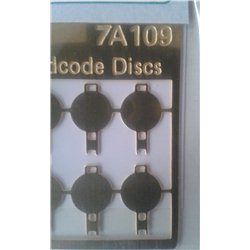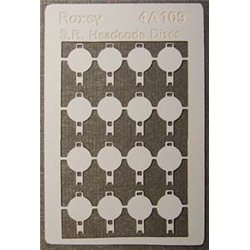Mainline Railways was a British model railway brand that operated between 1976 and 1983, introduced by Palitoy, the...
No products
Product successfully added to your shopping cart
There are 0 items in your cart. There is 1 item in your cart.
Search Tips
Open on Good Friday
The shop will be open on Friday 18th April.
Bring us some chocolate!
What are the white discs for on the front of steam trains?
The white discs that were displayed on the front of steam trains and early types of diesel were a way of communicating to the signal box what type of train it was and sometimes the route that it should take.
The white disc system is also known as the headcode and was introduced as early as 1850. Originally oil lamps painted white (to make them visible during daylight) and later white discs were placed in different positions on the front of locomotives to show what kind of train it was. This was important information for signalmen because back then trains were allowed to follow each other along the track using only a timed gap between them before the all-clear was given, so a signalman would leave a bigger gap after a slow train, for example, a heavy freight, so that the following train wouldn't catch it up and crash into the back of it. The system had obvious flaws but in the early days, it was all they had.
Eventually, the block system was introduced to the railways but the practice of using headcodes remained because although signalmen no longer needed to separate different types of train by a timed gap, they still found the information useful so that they could easily prioritise more important trains.
The exception to the rule was in the South of England where timetables were intense and junctions complex. Here it was felt that the use of headcodes would be more beneficial indicating a train's route so a six lamp/disc system was used.
During this period some companies had adopted their own versions of the system. However, this caused confusion when trains ventured into neighbouring regions so the Railway Clearing House initiated a simpler standard system. The system still used headcodes but restricted their use and potential combinations to just four lamps or discs, not surprisingly though, the South retained their route indication system.
The system was further simplified with the grouping of the big four in 1923, this time reducing the number of lamps or discs used to just two, this was again to apply to all but the South to best use the system in its respective environment.
The practice of using headcode discs and lamps continued into dieselisation. However, the system was eventually replaced with a four-digit code to indicate a train's combined type and route. Changing the system halfway through the production build of several early diesel designs resulted in many classes sporting different front end designs with some having discs whilst others had a route indicator box. This is most evident on the classes 20, 24, 31 and 40.
Click here to receive the tips weekly in your mailbox. You can unsubscribe at any time.









